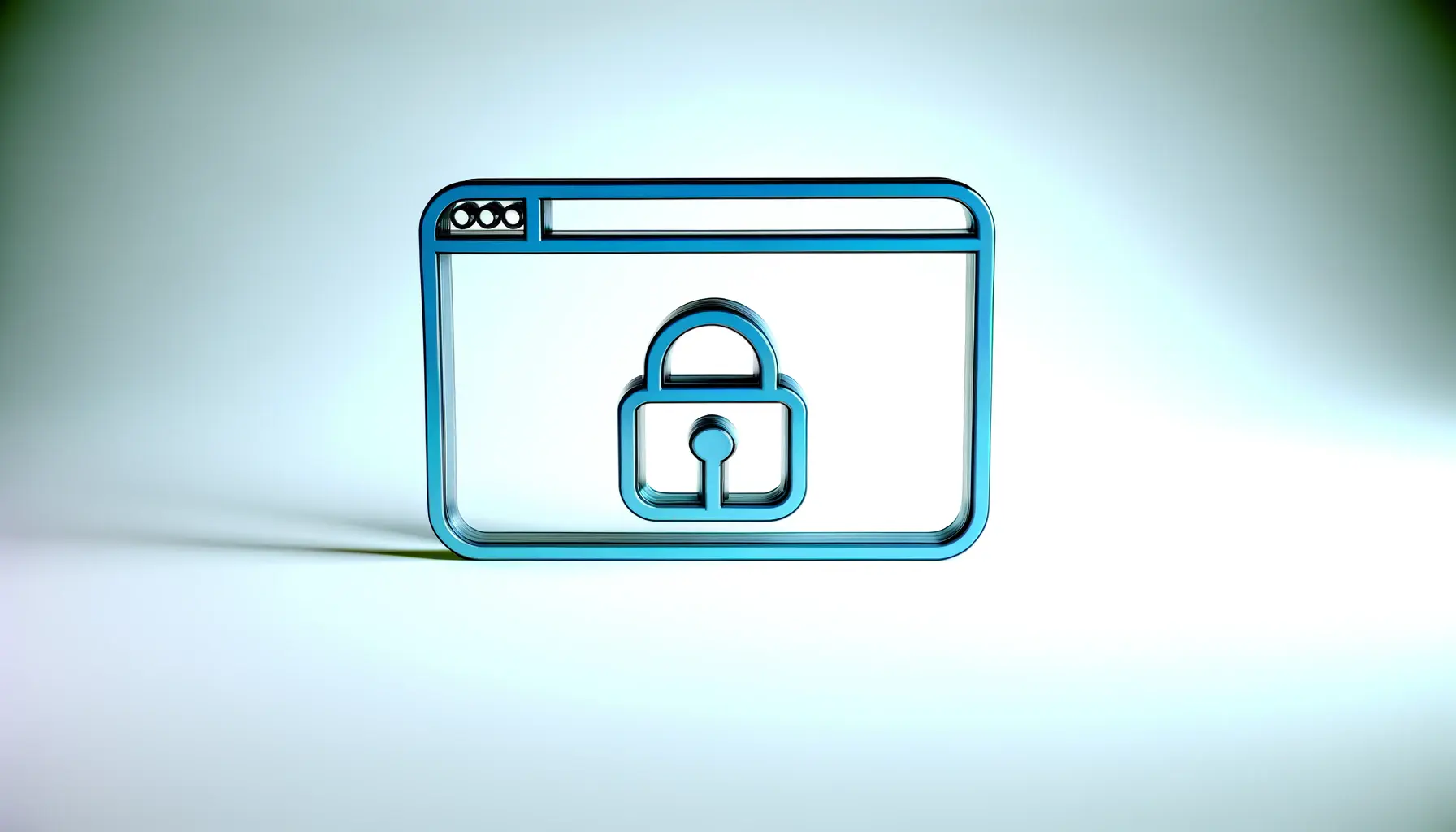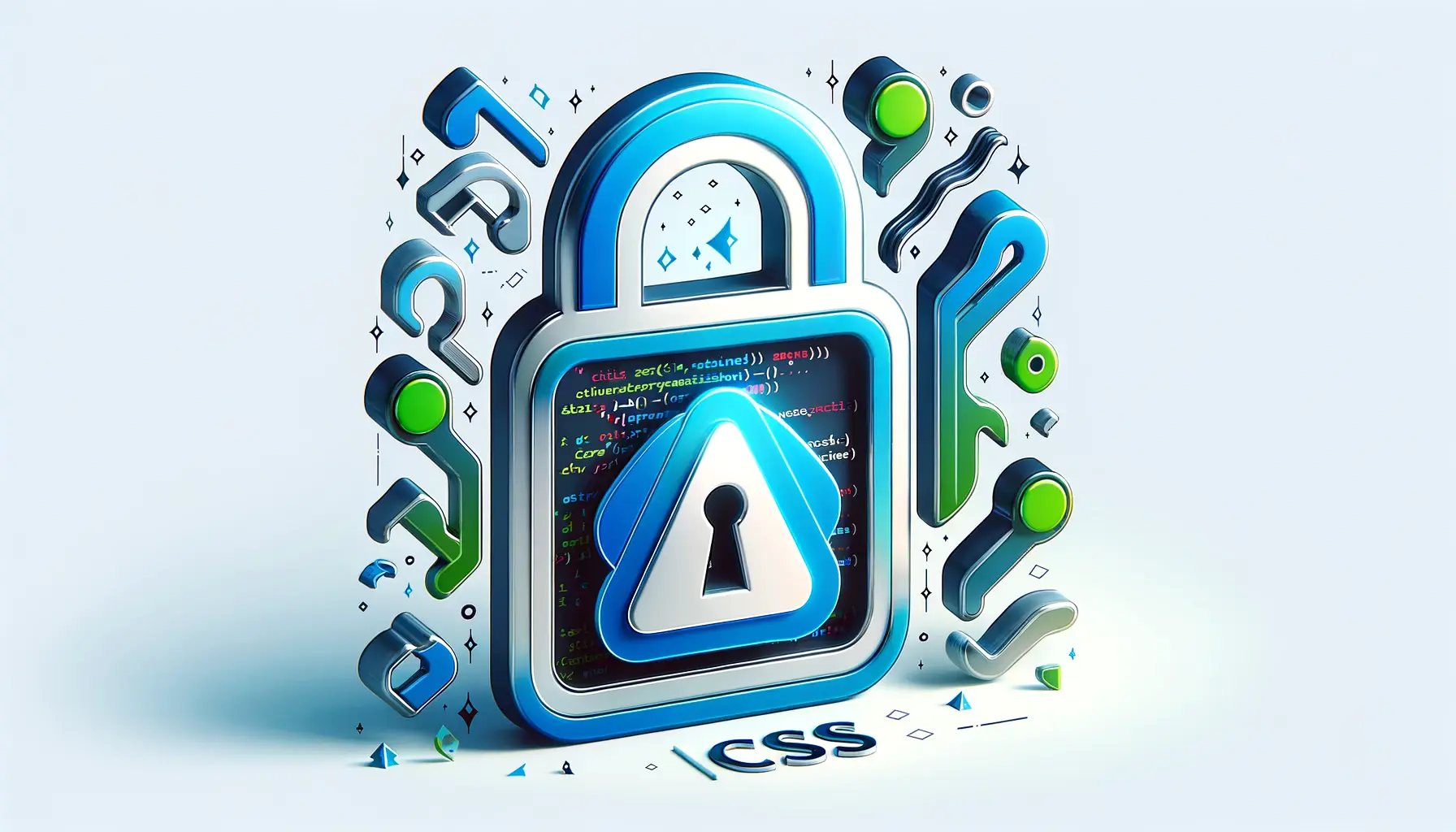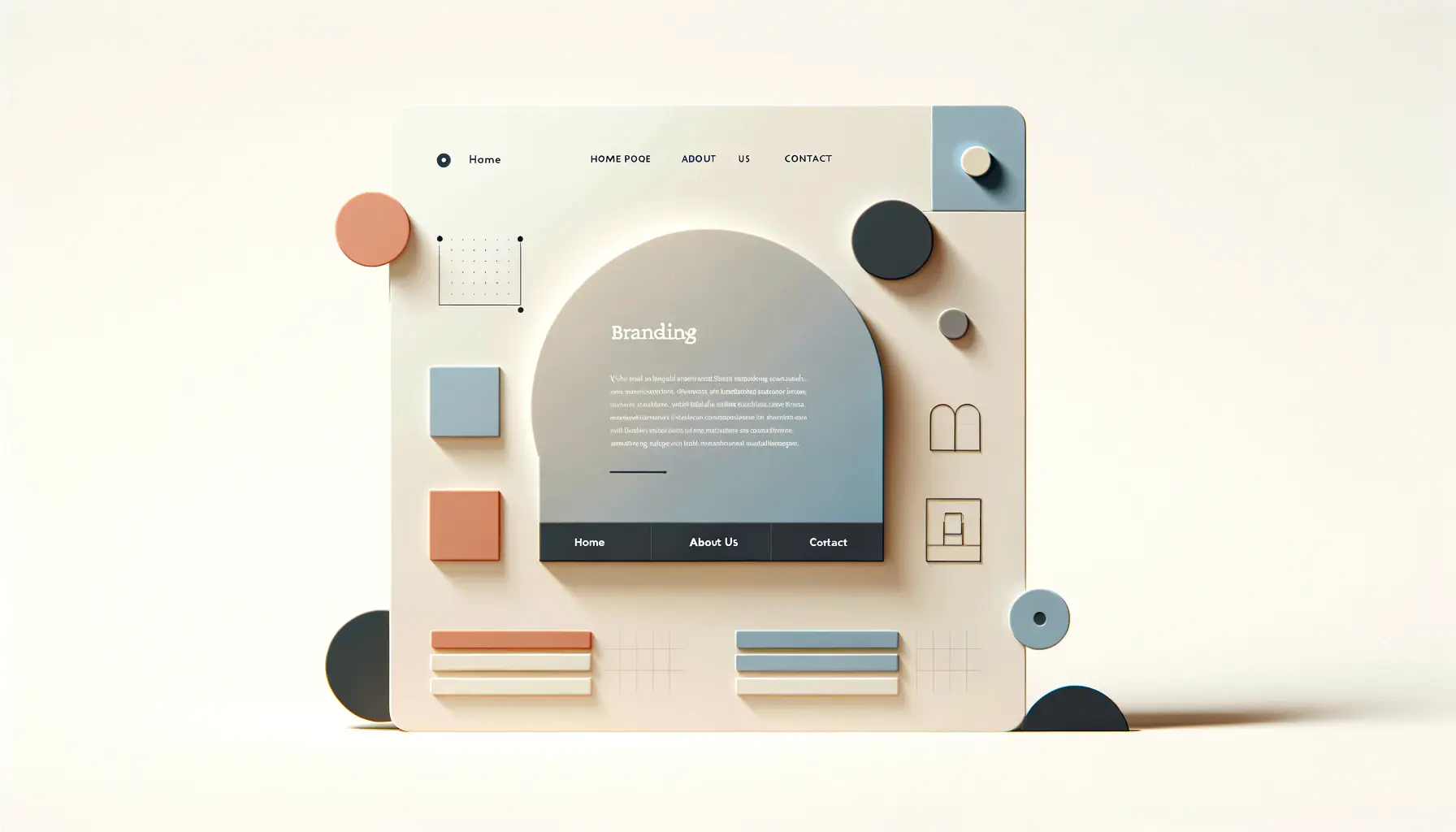In today’s digital age, the significance of incorporating security features into web design cannot be overstated.
As businesses and individuals increasingly rely on online platforms to showcase their brands, the necessity for robust security measures has become paramount.
This article delves into the critical role that security plays in web design branding, highlighting its impact on trust, credibility, and overall brand perception.
Security is not just a technical necessity but a foundational element of a brand’s identity.
In an era where cyber threats are evolving at an unprecedented pace, a brand’s commitment to security can significantly influence its market position.
By integrating advanced security features into web design, brands can protect their assets and their users’ data, fostering a safe online environment.
This commitment to security is a powerful branding tool, conveying a message of reliability and responsibility to customers.
- Understanding the Landscape of Web Security
- Key Security Features for Web Design
- Impact of Security on User Experience
- Designing for Security: Best Practices
- Challenges in Integrating Security into Web Design
- Future Trends in Web Security and Design
- Strategies for Maintaining Web Security Post-Launch
- Securing the Future of Branding Through Web Design
- FAQs on Security in Web Design
Understanding the Landscape of Web Security
The Evolution of Cyber Threats
The digital landscape is constantly changing, with cyber threats becoming more sophisticated and pervasive.
From phishing attacks to data breaches, the variety and complexity of these threats necessitate a proactive approach to web security.
This evolution underscores the importance of integrating security features from the initial stages of web design.
By doing so, brands not only safeguard their online presence but also reinforce their reputation as trustworthy entities.
Moreover, the legal implications of web security cannot be ignored.
With regulations such as the General Data Protection Regulation (GDPR) in the European Union and the California Consumer Privacy Act (CCPA) in the United States, the onus is on businesses to ensure their websites comply with these laws.
Failure to do so can result in hefty fines and a tarnished brand image, highlighting the need for a security-first approach in web design.
Building Trust Through Secure Design
Trust is the cornerstone of any successful brand, and in the digital realm, this trust is heavily influenced by a website’s security.
A secure website acts as a trust signal to visitors, reassuring them that their data is protected.
This is particularly crucial for e-commerce sites, where users are required to enter sensitive information such as credit card details and personal data.
By implementing features like SSL certificates, secure checkout processes, and data encryption, brands can significantly enhance user trust and loyalty.
Furthermore, the visual aspect of security features also plays a vital role in branding.
Icons such as padlocks and trust badges not only inform users of the security measures in place but also integrate seamlessly with the website’s design, contributing to a cohesive brand image.
This visual representation of security is a subtle yet powerful way to communicate a brand’s commitment to protecting its customers.
Incorporating security features into web design is not just a technical requirement but a strategic branding decision that can enhance trust, compliance, and user experience.
Key Security Features for Web Design
Integrating security features into web design is crucial for safeguarding against cyber threats and enhancing user trust.
Below, we explore essential security features that should be considered during the web design process to ensure a secure and trustworthy online presence.
SSL Certificates
Secure Socket Layer (SSL) certificates are fundamental for any website, as they encrypt data transmitted between the user’s browser and the website, ensuring sensitive information is protected.
An SSL certificate is also a critical factor for SEO rankings and user trust, as browsers label sites without SSL as ‘not secure.’
Secure Authentication Processes
Implementing robust authentication mechanisms is vital for websites that require user logins.
This includes multi-factor authentication (MFA), which adds an extra layer of security by requiring users to verify their identity in multiple ways before gaining access.
- Data Encryption: Encrypting data stored on the website ensures that even if data is intercepted, it cannot be easily deciphered by unauthorized parties.
- Regular Security Audits: Conducting regular security audits helps identify vulnerabilities in the website’s design and infrastructure, allowing for timely remediation.
- Anti-Malware Software: Integrating anti-malware software into the website’s backend protects against malicious software that could compromise both the website and its users’ data.
User Data Protection
Protecting user data is not only a legal requirement but also a critical aspect of building trust.
This involves implementing data protection measures such as secure forms for data collection, clear privacy policies, and compliance with data protection regulations.
Furthermore, educating users about the security measures in place and how their data is protected can enhance trust and transparency.
This can be achieved through clear communication on the website, such as FAQ sections or dedicated security information pages.
A comprehensive approach to security in web design not only protects against cyber threats but also significantly enhances a brand’s credibility and user trust.
Impact of Security on User Experience
The integration of security features in web design extends beyond protecting against cyber threats; it also plays a pivotal role in shaping the user experience (UX).
A secure website fosters a sense of safety and confidence among users, encouraging engagement and transactions.
Conversely, a lack of security features can lead to mistrust and a high bounce rate.
Let’s delve into how security influences UX and why it’s indispensable for maintaining a positive online presence.
Firstly, the presence of security indicators, such as SSL certificate padlocks, trust badges, and secure payment gateways, directly influences user perceptions.
These symbols of security reassure users that their data is handled securely, which is particularly crucial in e-commerce scenarios where financial transactions occur.
The assurance of security can significantly enhance the likelihood of conversion, as users feel more comfortable making purchases or sharing personal information.
- Seamless Authentication Processes: While robust authentication is crucial for security, it’s important to balance security with usability. Overly complex login procedures can frustrate users, leading to abandoned transactions. Designing seamless yet secure authentication processes, such as social media logins or single sign-on (SSO) solutions, can improve UX while maintaining security.
- Page Load Speed: Security features, if not properly optimized, can impact website performance, including page load times. Ensuring that security measures do not adversely affect site speed is crucial, as slow-loading pages can deter users and negatively impact SEO rankings.
- Transparent Communication: Clearly communicating with users about the security measures in place and how their data is being protected enhances trust and transparency. This can include detailed privacy policies, user-friendly security notifications, and educational content on data protection.
Moreover, addressing user concerns about security proactively can prevent potential issues from escalating into trust-damaging incidents.
Providing users with easy access to support in case of security concerns, such as a dedicated helpdesk or chat support, ensures that users feel supported and valued.
Enhancing user experience through thoughtful integration of security features not only protects users but also supports business objectives by building trust and encouraging user engagement.
Designing for Security: Best Practices
When it comes to embedding security within the fabric of web design, there are several best practices that designers and developers should adhere to.
These practices not only ensure the technical security of the website but also contribute to a secure user experience.
By prioritizing security from the outset, brands can protect their users and their reputation.
Start with a Secure Foundation
Choosing the right platform and hosting service is the first step in ensuring website security.
Opt for platforms known for their robust security features and compliance standards.
Similarly, selecting a hosting provider that offers built-in security measures, such as firewalls and intrusion detection systems, can provide an additional layer of protection.
Incorporate Security into the Design Process
Security should be considered at every stage of the web design process, from planning to deployment.
This involves regular security audits, vulnerability assessments, and the integration of security features into the website’s architecture.
By doing so, potential security issues can be identified and addressed early on, reducing the risk of future breaches.
- Use Secure Coding Practices: Adhering to secure coding guidelines helps prevent common vulnerabilities, such as SQL injection and cross-site scripting (XSS) attacks. Developers should be trained in secure coding techniques and encouraged to keep their skills up-to-date.
- Implement Content Security Policies (CSP): CSPs help mitigate the risk of XSS attacks by specifying which dynamic resources are allowed to load. This is crucial for preventing malicious scripts from running on your website.
- Ensure Data Validation: Properly validating user input on both the client and server sides can prevent numerous security vulnerabilities. This includes checking for proper data types, lengths, and formats to avoid injection attacks.
Focus on User Education and Awareness
Empowering users with knowledge about security practices is a critical aspect of a secure web design.
This can include tips on creating strong passwords, recognizing phishing attempts, and safely navigating the web.
Providing users with resources and tools to understand and manage their security can significantly enhance the overall security posture of your website.
Additionally, creating a clear and accessible privacy policy that explains how user data is collected, used, and protected reinforces transparency and trust.
Users are more likely to engage with websites that demonstrate a commitment to protecting their privacy and security.
Adopting a holistic approach to security in web design not only prevents cyber threats but also enhances user trust and engagement, ultimately supporting the brand’s integrity and success.
Challenges in Integrating Security into Web Design
While the integration of security features into web design is essential, it does not come without its challenges.
These obstacles can range from technical limitations to user resistance, and overcoming them requires a strategic approach.
Understanding these challenges is the first step towards creating a secure and user-friendly website.
Technical Complexity and Resource Constraints
One of the primary challenges in integrating security features is the technical complexity involved.
Implementing advanced security measures often requires specialized knowledge and resources, which may not be readily available to all organizations.
Small businesses, in particular, may struggle with the costs associated with securing their websites, including the purchase of SSL certificates, secure hosting, and regular security audits.
Moreover, the rapid evolution of cyber threats means that security measures must be continuously updated and tested, adding to the resource burden.
Balancing security with performance is also a critical challenge, as some security features can impact website speed and user experience.
User Resistance to Security Measures
Another significant challenge is user resistance to certain security measures.
For example, users may find multi-factor authentication (MFA) cumbersome, especially if it significantly slows down the login process.
Similarly, overly aggressive security warnings can alarm users unnecessarily, potentially driving them away from the site.
To mitigate these issues, it’s important to implement security features that are as user-friendly as possible.
Educating users about the importance of these measures and how they protect their data can also help reduce resistance and foster a culture of security.
Keeping Up with Regulatory Compliance
Compliance with data protection and privacy regulations, such as GDPR and CCPA, presents another layer of complexity.
These laws require websites to implement specific security measures, conduct regular audits, and ensure user data is handled according to strict guidelines.
Staying abreast of these regulations and integrating them into web design and functionality can be daunting, especially for businesses operating across multiple jurisdictions.
Despite these challenges, the benefits of integrating security into web design far outweigh the difficulties.
A secure website not only protects users but also enhances brand reputation and trust, which are invaluable assets in the digital age.
Overcoming the challenges of integrating security into web design requires a balance of technical expertise, user-focused design, and ongoing education and awareness efforts.
Future Trends in Web Security and Design
The landscape of web security is constantly evolving, with new threats emerging and technologies advancing.
As we look to the future, several trends are set to shape the integration of security features into web design.
Staying ahead of these trends is crucial for designers, developers, and businesses aiming to protect their online presence and users.
Increased Emphasis on Privacy by Design
Privacy by design is becoming a fundamental principle in web development, requiring security and privacy to be embedded into the design process from the outset.
This approach not only ensures compliance with privacy laws but also builds user trust.
Future web designs will likely prioritize features that enhance privacy, such as data minimization, encryption, and anonymization techniques.
Adoption of AI and Machine Learning
Artificial intelligence (AI) and machine learning (ML) are set to play a significant role in web security, offering advanced capabilities for detecting and responding to threats in real-time.
These technologies can analyze vast amounts of data to identify patterns indicative of cyber attacks, enabling proactive security measures.
Additionally, AI can enhance user authentication processes, making them more secure and user-friendly.
- Decentralized Security Models: The rise of blockchain technology and decentralized architectures offers new possibilities for web security. These models can provide enhanced security and privacy by distributing data across multiple nodes, making it more difficult for attackers to compromise information.
- Biometric Authentication: As biometric technology becomes more sophisticated and accessible, we can expect to see an increase in biometric authentication methods on websites. This could include fingerprint scanning, facial recognition, and voice authentication, offering a higher level of security and convenience for users.
- Enhanced Encryption Techniques: Encryption technologies are continually improving, with new methods being developed to protect data more effectively. Future web designs may incorporate these advanced encryption techniques to ensure that user data remains secure, even in the event of a breach.
As these trends develop, the challenge for web designers and developers will be to integrate these advanced security features in a way that enhances, rather than detracts from, the user experience.
By staying informed and adaptable, professionals can create websites that are not only secure but also innovative and user-friendly.
Embracing future trends in web security and design will require a commitment to continuous learning and innovation, ensuring that websites can protect against emerging threats while providing a seamless user experience.
Strategies for Maintaining Web Security Post-Launch
Launching a website with robust security features is a significant achievement, but the work doesn’t stop there.
Maintaining web security is an ongoing process, requiring continuous monitoring, updating, and educating users.
Here are key strategies to ensure that a website remains secure long after its initial launch.
Regular Security Audits and Updates
Conducting regular security audits is crucial for identifying vulnerabilities that could be exploited by attackers.
These audits should be complemented by timely updates to the website’s software, including the CMS, plugins, and themes.
Keeping software up to date is one of the simplest yet most effective ways to protect against security threats.
Continuous Monitoring for Suspicious Activity
Implementing continuous monitoring tools can help detect and respond to security threats in real time.
These tools can track unusual activity, such as multiple failed login attempts or unexpected changes to website files, alerting administrators to potential security breaches.
- Use of Web Application Firewalls (WAF): A WAF can protect against common web threats by filtering and monitoring HTTP traffic between a web application and the Internet. It acts as a shield, blocking malicious traffic before it reaches the website.
- Data Backup and Recovery Plans: Regularly backing up website data is essential for recovery in the event of a cyber attack or data loss. A comprehensive backup and recovery plan ensures that a website can be quickly restored to normal operation with minimal disruption.
- User Education and Training: Educating website users and administrators about security best practices is vital. This includes training on recognizing phishing attempts, creating strong passwords, and safely handling personal and sensitive information.
Maintaining web security post-launch is not just a technical challenge but also a strategic one.
It involves a combination of technology, processes, and people working together to protect the website and its users.
By implementing these strategies, businesses can ensure that their websites remain secure, reliable, and trustworthy in the face of evolving cyber threats.
Effective web security maintenance requires a proactive approach, combining regular audits, continuous monitoring, and ongoing education to safeguard against potential threats.
Securing the Future of Branding Through Web Design
In the digital era, the importance of integrating security features into web design cannot be overstated.
As we have explored, security is not just a technical requirement but a significant component of a brand’s identity and reputation.
A secure website fosters trust and confidence among users, which are crucial for the success and longevity of any online presence.
This article has delved into various aspects of web security in branding, highlighting the challenges, best practices, and future trends.
Now, let’s encapsulate the key insights and underscore the path forward for brands aiming to thrive in the online landscape.
Building Trust Through Security
Trust is the cornerstone of any successful brand-customer relationship.
In the context of web design, security features serve as the foundation upon which this trust is built.
From SSL certificates to secure authentication processes, these features reassure users that their data is in safe hands.
For brands, this translates into enhanced credibility and loyalty, driving long-term success.
Embracing Challenges as Opportunities
The journey to integrating security into web design is fraught with challenges, from technical complexities to regulatory compliance.
However, these challenges present opportunities for brands to demonstrate their commitment to security and user protection.
By adopting a proactive approach to web security, brands can navigate these obstacles, setting themselves apart in a crowded digital marketplace.
- Regular security audits and updates ensure that websites remain protected against emerging threats.
- Continuous monitoring and the use of Web Application Firewalls (WAF) provide real-time protection against cyber attacks.
- User education and awareness initiatives empower users to engage with the web safely, further reinforcing a brand’s commitment to security.
Looking Ahead: The Future of Secure Web Design
As technology evolves, so too will the landscape of web security.
Future trends, such as AI and machine learning in threat detection and the adoption of biometric authentication, offer exciting possibilities for enhancing security in web design.
Brands that stay ahead of these trends, integrating advanced security features into their web design, will not only protect their users but also position themselves as leaders in the digital age.
In conclusion, the integration of security features into web design is a critical aspect of modern branding.
It’s a dynamic and ongoing process that requires attention, investment, and foresight.
For brands looking to establish a strong online presence, prioritizing security in web design is not just a strategic move—it’s an essential one.
By doing so, they can protect their users, their reputation, and their future in the increasingly complex digital landscape.
Quality web design is key for a great website! Check out our service page to partner with an expert web design agency.
FAQs on Security in Web Design
Explore common questions about integrating security into web design to enhance brand trust and user experience.
Security protects against cyber threats, builds user trust, and ensures compliance with data protection laws, enhancing brand reputation.
Essential features include SSL certificates, secure authentication, data encryption, regular security audits, and anti-malware software.
Robust security measures reassure users, fostering a safe browsing environment that enhances trust and encourages engagement.
Yes, incorporating security features into the design process can prevent vulnerabilities and protect user data from the outset.
Challenges include technical complexity, user resistance to security measures, and keeping up with regulatory compliance.
Emerging trends include privacy by design, AI and machine learning for threat detection, and the adoption of biometric authentication.
Maintaining security involves regular audits, continuous monitoring, using WAFs, data backup plans, and user education.
Educating users and administrators about security best practices helps prevent breaches and fosters a culture of security awareness.












